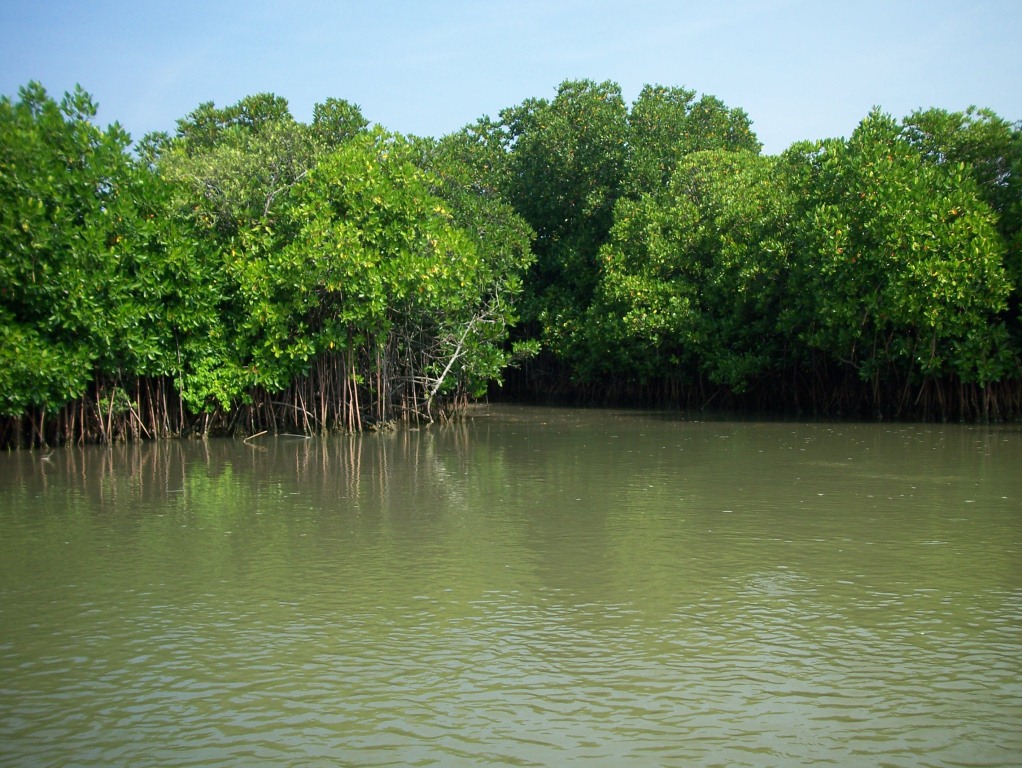Mangrove Forests
Description: At first glance, mangrove forests are unappealing and unwelcoming places - muddy, smelly, wet, hard to move through because of deep mud, tides and tangled roots, and infested with millions of mosquitoes and sandflies (and if you're unlucky, crocodiles too). Despite this, mangroves can in fact have a certain haunting beauty. 
Mangroves are also extremely important. One of the most important roles mangroves play is as a breeding ground for fish - without mangroves, fish-stocks would be drastically reduced. This is important for the health of the oceans, but is also significant because of the economic importance of commercial fishing. Mangroves are also a prime habitat for many edible crabs.
In addition, mangroves play an important role in stabilizing coastlines and river mouths, protecting them from erosion. A number of mangrove plants also have traditional medicinal uses, as well as practical applications.
 Mangrove forests are not nearly as diverse in tree species as mixed dipterocarp rainforests, probably because of the high degree of specialisation which the harsh mangrove habitat requires - the trees must be able to grow in salty water, cope with rapid changes in water levels from tides, and cope with storms and hot sunshine. Many of the trees have adapted special mechanisms for coping with these conditions, including stilt-roots for support, breathing roots which
Mangrove forests are not nearly as diverse in tree species as mixed dipterocarp rainforests, probably because of the high degree of specialisation which the harsh mangrove habitat requires - the trees must be able to grow in salty water, cope with rapid changes in water levels from tides, and cope with storms and hot sunshine. Many of the trees have adapted special mechanisms for coping with these conditions, including stilt-roots for support, breathing roots which
stick up out of the dense mud, and ways to pump out excess salt!
Plants: The most important plant species include the various mangrove trees themselves - pioneering Sonneratia sp, as well as Avicennia sp, and Rhizophora sp. The trees of the first two genus grow breathing roots called pneumatophores, the third is recognisable from its extensive stilt-roots. Trees from the genus Avicennia are locally known as api api ("fires" or "lights") trees, because they attract large numbers of fireflies at night. The versatile Nipah palm grows in brackish, swampy areas behind mangroves. Many mangrove trees also support large numbers of epiphytes, such as ferns and orchids.
Animals: Key animals include monitor lizards, scavenging in the shallows, and proboscis monkeys, which venture in to look for succulent leaves to eat. Macaques occasionally venture into the mangroves looking for shellfish, and otters play in river mouths lined with mangroves. Estuarine habitats (especially where rivers and streams run through tidal mangroves) are also important for the large potentially man-eating estuarine crocodiles. Crabs are abundant and all around at low tide - especially fiddler crabs, with their one oversized claw; and bumbling hermit crabs in their clumsy borrowed homes. The loud popping sound at low tide, made by certain mud-burrowing bivalves (similar to mussels and clams), is a typical mangrove sound.
Insects: The most noticeable insects in mangroves are the mosquitoes and sandflies, which can be quite a nuisance at times. Fireflies are also noticeable at night.
Best places to see: The best place to see Mangrove in Sarawak is Bako National Park. A beautifully made boardwalk winds through mangroves alive with fidler crabs, mudskippers, garfish, kingfishers, and if you're lucky, monitor lizards and proboscis monkeys. It is especially beautiful and lively at dusk and dawn. At low tide, you can also walk through the more open mangrove forest in other parts of the Park. A small patch of mangrove can also be seen on the walk to Tanjung Datu National Park, from Telok Melano. There is also a mangrove boardwalk at Similajau National Park.